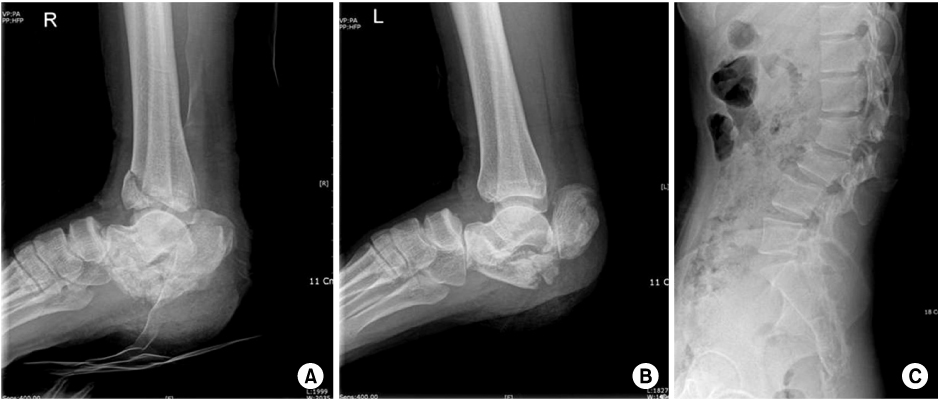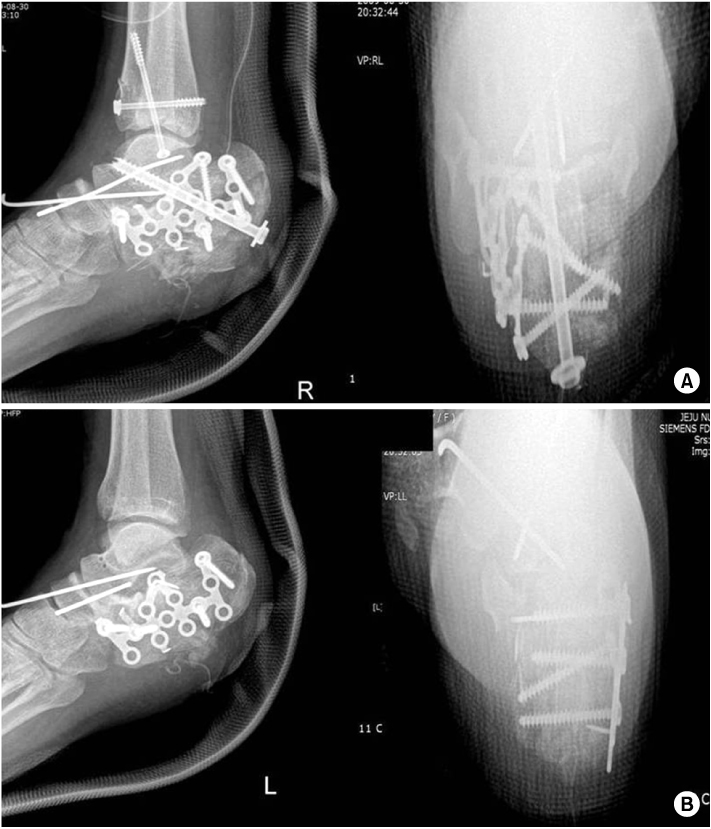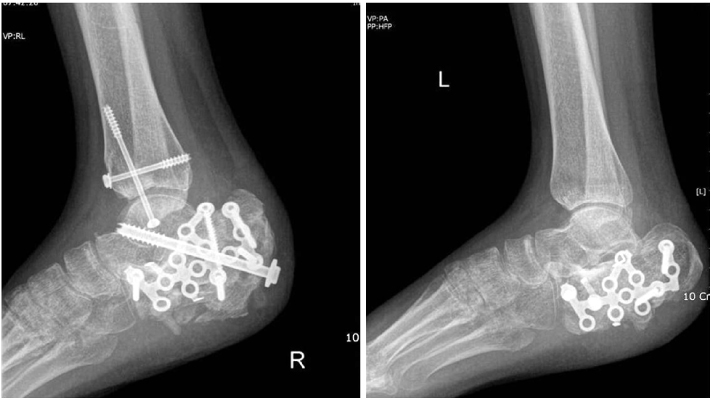J Korean Fract Soc.
2011 Jan;24(1):87-91. 10.12671/jkfs.2011.24.1.87.
Bilateral Open Transcalcaneal Fracture with Talonavicular Dislocation: A Case Report
- Affiliations
-
- 1Department of Orthopedic Surgery, Chonbuk National University School of Medicine, Research of Clinical Medicine, Jeonju, Korea.
- 2Department of Orthopedic Surgery, Jeju National University College of Medicine, Jeju, Korea. ggeep@naver.com
- KMID: 1449423
- DOI: http://doi.org/10.12671/jkfs.2011.24.1.87
Abstract
- Although calcaneal fracture is relatively common in ankle injury, open intraarticular calcaneal fracture with dorsal dislocation of the navicular from talus is extremely rare and severe injury. There are few data which are available concerning the injury mechanism and treatment options. The purpose of this report is to describe a case with bilateral open transcalcaneal fracture with talonavicular dislocation and to discuss the prevalence, mechanism of this injury, and treatment options.
Keyword
Figure
Reference
-
1. Byun YS, Cho YH, Park JW, Lee JS, Kim JH. Early postoperative complications of calcaneal fractures following operative treatment by a lateral extensile approach. J Korean Fract Soc. 2004. 17:323–327.
Article2. Coltart WD. Aviator's astragalus. J Bone Joint Surg Br. 1952. 34:545–566.
Article3. Ebraheim NA, Savolaine ER, Paley K, Jackson WT. Comminuted fracture of the calcaneus associated with subluxation of the talus. Foot Ankle. 1993. 14:380–384.
Article4. Folk JW, Starr AJ, Early JS. Early wound complications of operative treatment of calcaneus fractures: analysis of 190 fractures. J Orthop Trauma. 1999. 13:369–372.
Article5. Jung HG, Kim YJ, Jeon SH. Primary subtalar arthrodesis for the treatment of intra-articular calcaneal comminuted fractures. J Korean Fract Soc. 2006. 19:418–423.
Article6. Kleiger B. Injuries of the talus and its joints. Clin Orthop Relat Res. 1976. 121:243–262.
Article7. Marsh JL, Saltzman CL, Iverson M, Shapiro DS. Major open injuries of the talus. J Orthop Trauma. 1995. 9:371–376.
Article8. Ricci WM, Bellabarba C, Sanders R. Transcalcaneal talonavicular dislocation. J Bone Joint Surg Am. 2002. 84:557–561.
Article9. Sanders R, Fortin P, DiPasquale T, Walling A. Operative treatment in 120 displaced intraarticular calcaneal fractures. Results using a prognostic computed tomography scan classification. Clin Orthop Relat Res. 1993. 290:87–95.10. Sanders R, Clare M. Coughlin MJ, Mann RA, Saltzman CL, editors. Fractures of the calcaneus. Surgery of the foot and ankle. 2007. 7th ed. St. Louis: Mosby;2017–2073.
- Full Text Links
- Actions
-
Cited
- CITED
-
- Close
- Share
- Similar articles
-
- Treatment of Talonavicular Subluxation Accompanied by Calcaneal Malunion: A Case Report
- The Dislocation of Talonavicular Joint: A Case Report
- Fracture and Dislocation of the Midtarsal Joint: A Case Report
- Subtalar Dislocation: A Case Report
- An Isolated Fracture-Dislocation of the Cuboid: A Case of Report






